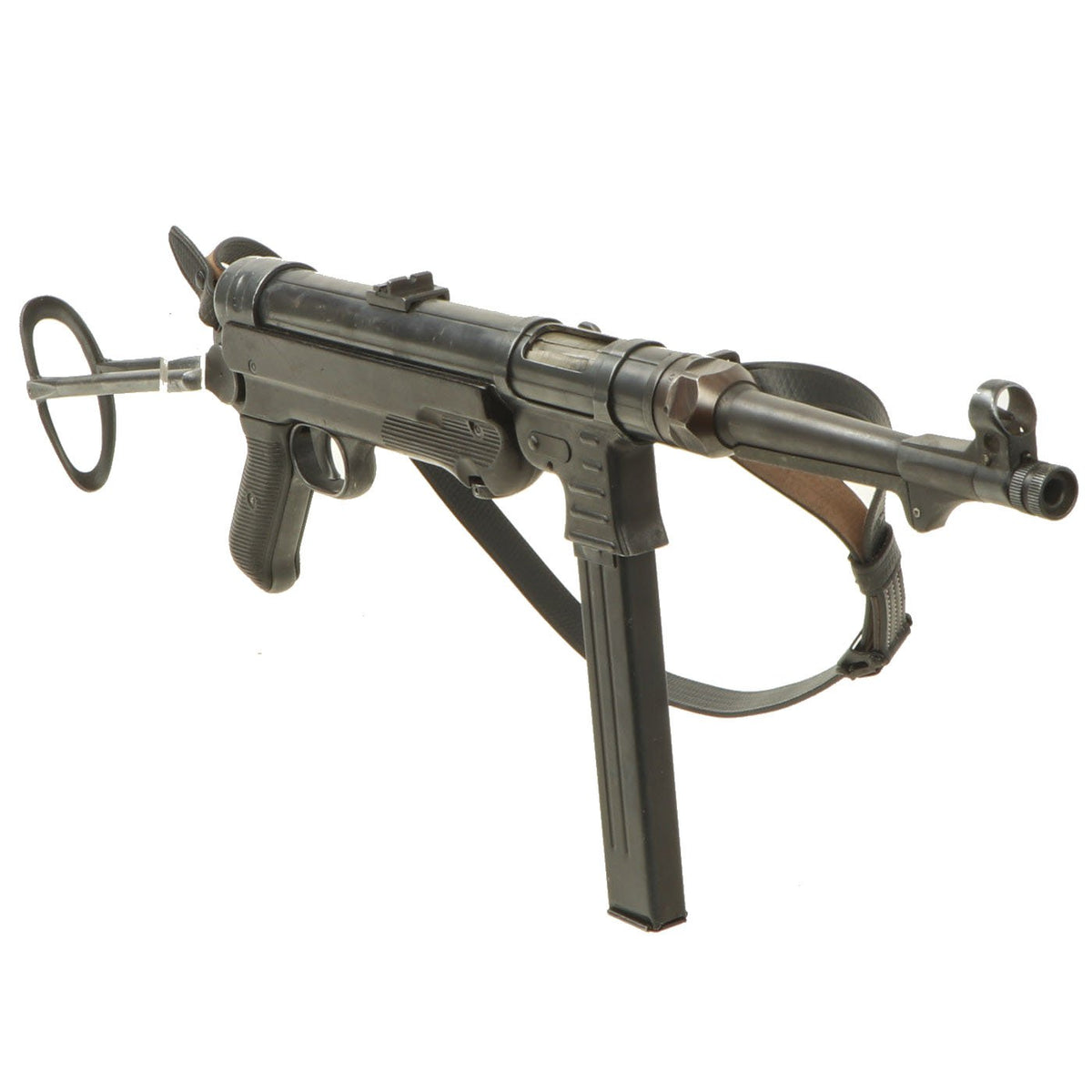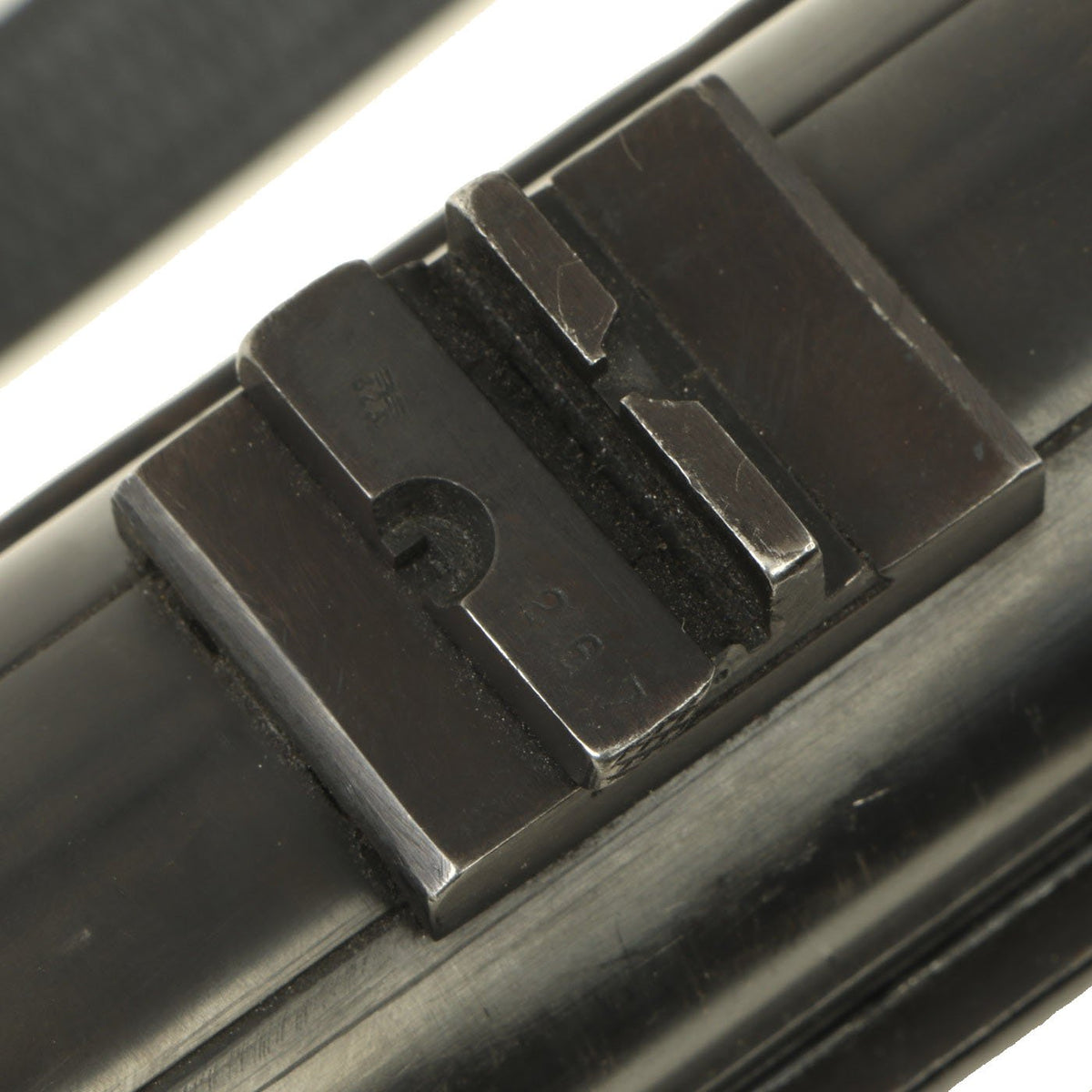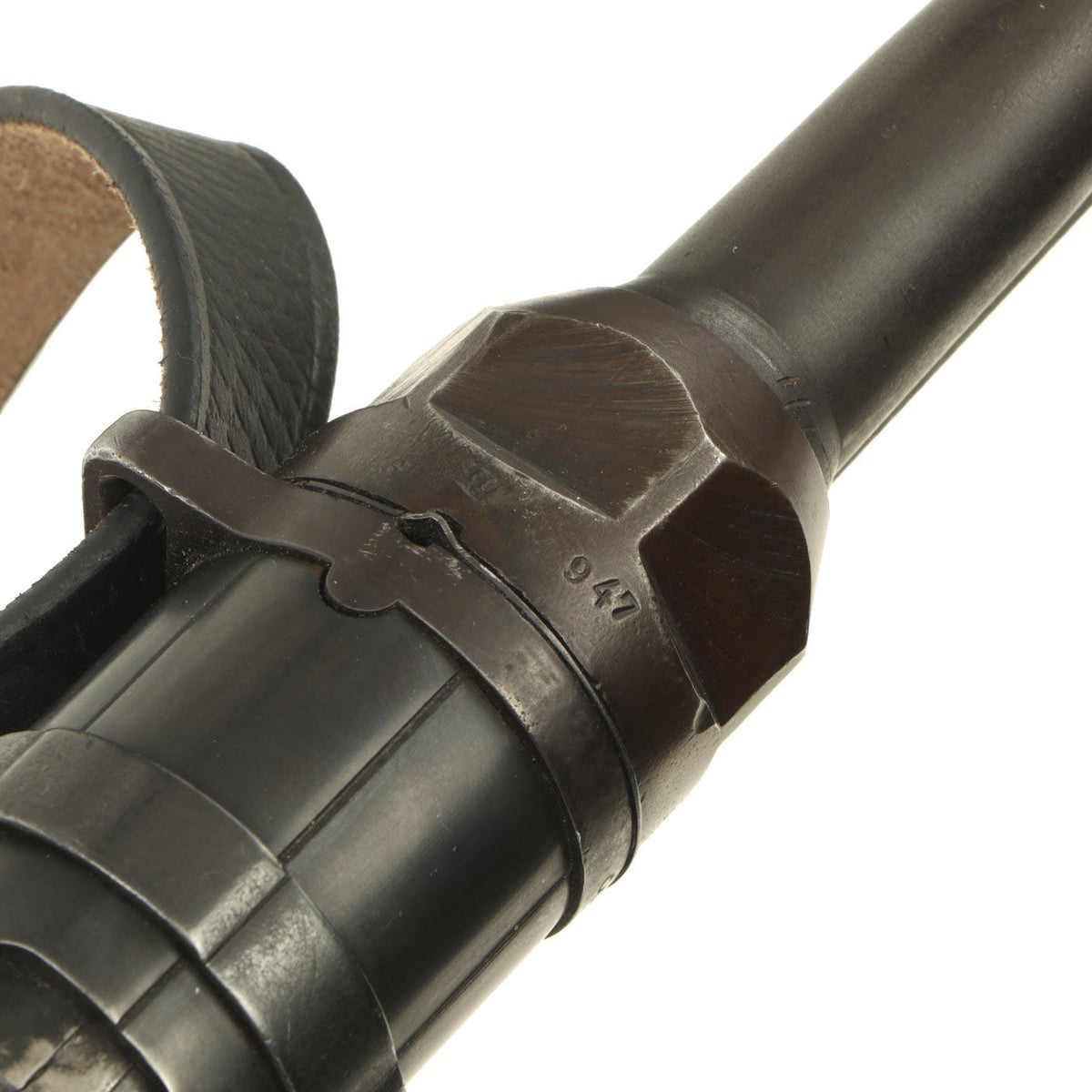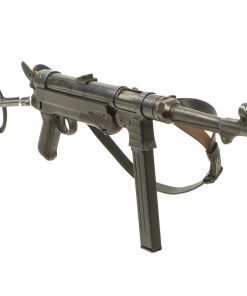Original German WWII 1942 Dated MP 40 Display Gun by Steyr with Magazine & Sling – Maschinenpistole 40 Original Items
$ 4.495,00 $ 1.123,75
Original Item: One-of-a-kind. This is an very nice condition MP40 Maschinenpistole 40 display gun, built from original parts and constructed on a legal non-firing BATF approved re-welded display receiver, with the required 2 inches of totally replaced material. This example still features a non deactivated barrel, and has a very nice original magazine included with it.
Offered with a very good original dark brown bakelite stock and grips, with a functional extending butt stock, this is the real thing that will only appreciate in value over time. All complete, the bolt has been welded in place at the front of the receiver as required by the BATF. The barrel is original and has not been deactivated, with an intact chamber and faint rifling visible, though there is also a bulge from a stuck bullet. Original markings have been maintained and make a keystone item for any serious WWII collection.
The rear receiver cup of this display gun is marked with the date and manufacture codes, which are clear:
MP40
bnz.42
7232
This indicates 1942 manufacture by Steyr-Daimler-Puch AG, Werk Steyr, the legendary Austrian arms company. The rear receiver cup does not have any subcontractor markings. The trigger guard, folding butt stock, and other components have non matching serial numbers, very common in guns released from surplus long after WWII.
There are also other markings and Waffenamt proofs throughout the display gun. Overall condition is very good, with lots of the original finish, andvery good condition bakelite. If you were holding out for a good one, this could be it!
Included is an original MP 40 magazine, in excellent condition, marked kur 42 for Steyr-Daimler Puch AG, Werk Graz in Poland, production 1942, complete with Waffenamt proof marks. Magazine will have the spring and follower removed if shipped to a state that prohibits high capacity magazines.
A great chance to pick up a very attractive MP40 display gun, complete with magazine and a reproduction sling! Ready to display!
History of the MP40
The Maschinenpistole 40 (“Machine pistol 40”) descended from its predecessor the MP 38, which was in turn based on the MP 36, a prototype made of machined steel. The MP 36 was developed independently by Erma Werke’s Berthold Geipel with funding from the German Army. It took design elements from Heinrich Vollmer’s VPM 1930 and EMP. Vollmer then worked on Berthold Geipel’s MP 36 and in 1938 submitted a prototype to answer a request from the Heereswaffenamt (Army Weapons Office) for a new submachine gun, which was adopted as MP 38. The MP 38 was a simplification of the MP 36, and the MP 40 was a further simplification of the MP 38, with certain cost-saving alterations, most notably in the more extensive use of stamped steel rather than machined parts.
It was heavily used by infantrymen (particularly platoon and squad leaders), and by paratroopers, on the Eastern and Western Fronts. Its advanced and modern features made it a favorite among soldiers and popular in countries from various parts of the world after the war. It was often erroneously called “Schmeisser” by the Allies, despite Hugo Schmeisser’s non-involvement in the weapon’s design and production. From 1940 to 1945, an estimated 1.1 million were produced by Erma Werke.
Fast Shipping with Professional Packaging
Thanks to our longstanding association with UPS FedEx DHL, and other major international carriers, we are able to provide a range of shipping options. Our warehouse staff is expertly trained and will wrap your products according to our exact and precise specifications. Prior to shipping, your goods will be thoroughly examined and securely secured. We ship to thousands clients each day across multiple countries. This shows how we're dedicated to be the largest retailer on the internet. Warehouses and distribution centres can be located throughout Europe as well as the USA.
Note: Orders with more than one item will be assigned a processing date depending on the item.
Before shipping before shipping, we'll conduct a thorough inspection of the items you have ordered. Today, the majority of orders will be delivered within 48 hours. The delivery time will be between 3-7 days.
Returns
The stock is dynamic and we cannot completely manage it because multiple stakeholders are involved, including our factory and warehouse. So the actual stock may alter at any time. It's possible that you may not receive your order once the order has been made.
Our policy is valid for a period of 30 days. If you don't receive the product within 30 days, we are not able to issue a refund or an exchange.
You can only return an item if it is unused and in the same state as the day you received it. You must have the item in its original packaging.
Related products
Uncategorized
Uncategorized
Uncategorized
Uncategorized
Uncategorized
Uncategorized
Band of Brothers ORIGINAL GERMAN WWII Le. F.H. 18 10.5cm ARTILLERY PIECE Original Items
Uncategorized
Armored Burgonet Helmet & Polearm from Scottish Castle Leith Hall Circa 1700 Original Items
Uncategorized
Uncategorized
Angolan Rebel 1970s era 60mm Inert Display Mortar from Angolan Civil War Original Items
Uncategorized
Uncategorized
Uncategorized
Uncategorized
Australian WWII Owen MK1 Machine Carbine SMG Custom Fabricated Replica with Sling Original Items
Uncategorized
Uncategorized
Uncategorized
Uncategorized













































































